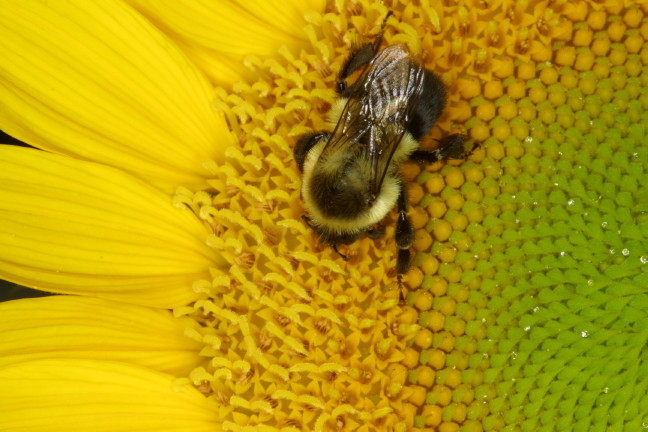By: Claudia Mazzeo
Send to a friend
The details you provide on this page will not be used to send unsolicited email, and will not be sold to a 3rd party. See privacy policy.
[BUENOS AIRES] The loss of wild pollinators from agricultural landscapes could threaten global crop yields, a study has found.
Led by Lucas Garibaldi, an assistant professor at the National University of Río Negro in Argentina, a team of researchers compared fields containing many wild pollinators — mostly insects — with those containing few. They studied 41 crop systems across all continents except Antarctica to understand how the loss of wild pollinators impacts crop production.
SPEED READ
- Fields with more wild pollinators produced more fruit
- Honeybees also raised fruit production, but only in 14 per cent of cases
- Farmland should include habitat for wild insects
They found that the more wild pollinators a field contained, the more fruit it produced. From this, the researchers deduce that the loss of natural pollinators could reduce crop yields and hit long-term food security.
The results of their study were published in Science last month (28 February).
Study co-author Alexandra-Maria Klein, professor of ecosystem functions at the Leuphana University of Lüneburg in Germany, said in a press release: "Intensified agriculture separates crop production and biodiversity. Our study shows that this separation can have negative consequences for pollination services … We urgently need more research that informs but also involves the global and wider society to explore novel management designs for agricultural landscapes."
The researchers also examined whether adding honeybees to fields can compensate for the lack of wild pollinators and maximise agricultural production.
They found that wild pollinators pollinated crops more effectively, with an increase in visits resulting in twice as much fruit being produced compared with a similar rise in honeybee visits.
Furthermore, while honeybee visits boosted fruit production in just 14 per cent of the crop systems they served, wild-insect visits led to universal increases in production.
"Although honeybees are generally viewed as a substitute for wild pollinators, we demonstrate that they neither maximise pollination nor fully replace the contribution of diverse, wild-insect assemblages to fruit [production] for a broad range of crops and agricultural practices on all continents with farmland," Garibaldi tells SciDev.Net.
He adds that farmland should include habitat for both honeybees and wild insects. As the use of a single pollinator would leave fruit production more vulnerable to disease, predators or parasites, the researchers support management policies that include encouraging pollination by wild and managed species.
Co-author Claire Kremen, a professor at the University of California, Berkeley, United States, agrees: "Honeybees on their own are a weak link in the chain from field to fork. To ensure food security, it is critical to diversify farm fields and landscapes to support our wild pollinators."
A previous study that Garibaldi was involved in, published in The American Journal of Plant Science and Biotechnology, describes the vulnerability of Argentina's food security and economy to a decline in wild-insect pollinators.
It found that, in the absence of pollination, crop production would fall by 12 per cent and the amount of cultivated land would need to increase by almost a quarter to cope with this deficit.
Maria Alejandra Palacio and Gerardo Gennari, researchers at the Apiculture Program at the National Institute of Agricultural Technology, in Argentina, who were not involved in either study, write in an email: "Awareness is essential for the preservation of productive environments by means of sustainable agricultural practices, with the least possible use of pesticides, and the use of biological controls and strategies that benefit both crop yields and the quality and safety of food products".
Link to study in The Americas Journal of Plant Science and Biotechnology
References
Science doi: 10.1126/science.1230200 (2013)
The American Journal of Plant Science and Biotechnology, 3, Special Issue 1, 106 (2010)














